
If you're developing software, there's no doubt that you have to deal with the question of agile methodology. The word agile means more than just fast — it also refers to an approach to software development that emphasizes flexibility and changes instead of standardization and structure.
Agile software development methodologies have become common in many industries, including computer science, web development, and programming. When you ask software developers about their favorite methods, you're likely to hear terms like Agile, Scrum, Kanban, etc. All of these practices started as a part of an effort to make software development more agile.
But what does that mean?
If a developer tells you that she's using an agile methodology, it usually means that she's trying to make her team's process more flexible, transparent, and—most importantly—reactionary. It refers to a new way of making decisions.
As an employer or project manager looking for ways to improve your company or product, you should use these five steps as guidelines:
-
Identify potential problems
-
Estimate difficulty
-
Calculate priority
Our Amazing SponsorsDigitalOcean offers a simple and reliable cloud hosting solution that enables developers to get their website or application up and running quickly.View Website
Laravel News keeps you up to date with everything Laravel. Everything from framework news to new community packages, Laravel tutorials, and more.View Website
A Laravel Starter Kit that includes Authentication, User Dashboard, Edit Profile, and a set of UI Components. Learn more about the DevDojo sponsorship program and see your logo here to get your brand in front of thousands of developers.View Website
-
Analyze the impact
-
Create an action plan
With multiple changes occurring in the market, agile is a proven effective methodology for software development. However, there are numerous agile methodologies you can go for. What are the top software development methodologies?
The research says the following:
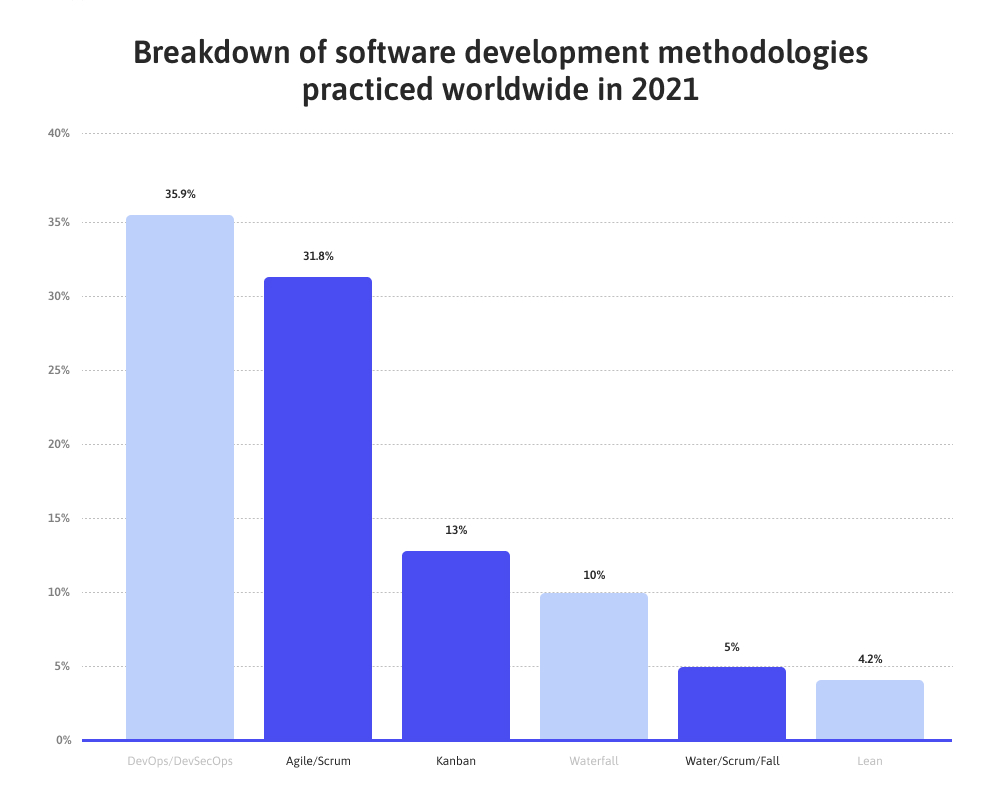
Source: Statista- Software Development Methodologies
The above infographic clearly depicts that Agile andi its various forms has gained an edge in the industry. This article explores the agile development methodologies from all angles and offers an informed opinion on which ones will continue to dominate throughout the next decade.
Here are the Top 5 Agile Software Development Methods Practised Worldwide
1. Scrum Methodology- Minimizing Risks & Maximizing Output

I found that Scrum was still dominant in my research, with 31.8% of our respondents using it. While there are some early signs of adopting other agile methods (like Kanban), we expect four years before any significant moves into these practices occur.
If there is a dramatic shift in adoption over that time, Scrum will no longer be on top for long. But for now, Scrum remains king. Its simplicity means companies can easily add scrum development to their stack and quickly see results, which explains its long-standing popularity and continuing relevance among users.
As Scrum has become an industry-standard, many newcomers find themselves turning towards it because they don't have their research or information about new practices that may lead them elsewhere.
What is Scrum Methodology?
Well, it's a simple set of iterative and incremental practices that make sure you don't get bogged down by excessive planning. Scrum also ensures you can keep pace with ever-changing business needs while minimizing risk and maximizing quality outputs. That might sound good to your team right now (who doesn't want to be less bogged down?), but it gets better.
Its key elements include sprint, which is a small chunk of time used to develop and deliver products or services. Sprints are typically two weeks long and must provide something new every time.
Benefits of using Scrum Methodology
-
Smooth elimination of errors.
-
High visibility of all stages of development.
-
It produces excellent & effective results.
-
It facilitates good documentation.
-
High flexibility.
Drawbacks of using Scrum Methodology
-
It requires strict governance.
-
Not suitable for large groups.
Kanban Methodology- Enhancing Focus on Planning
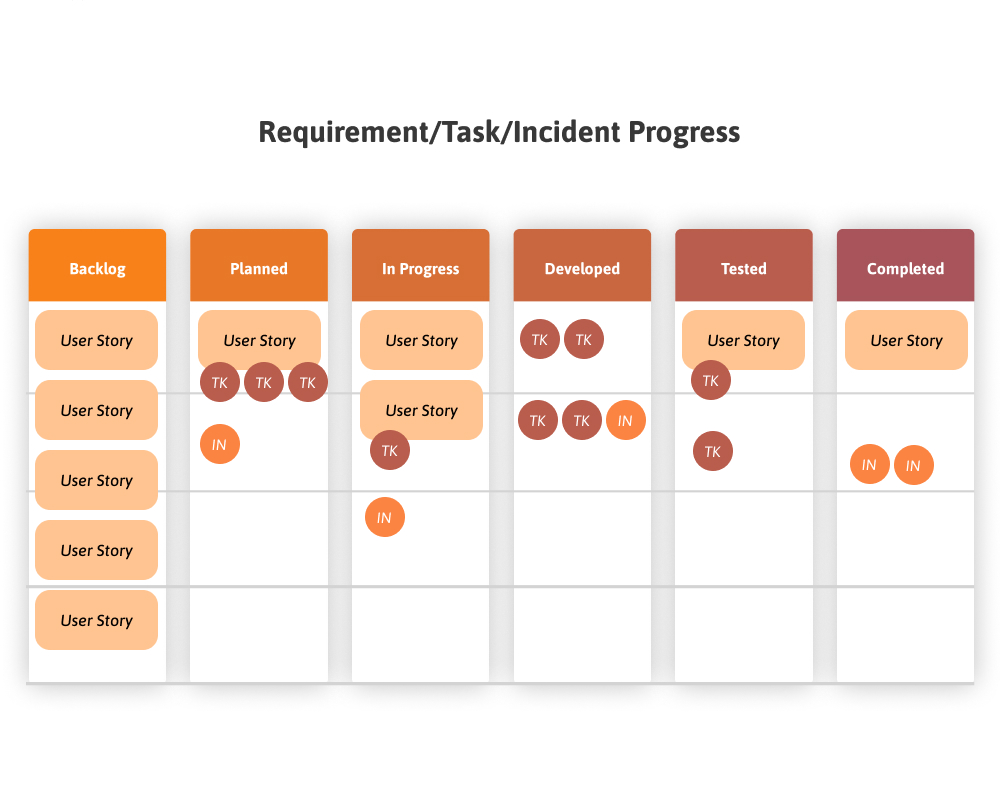
The Kanban methodology is one of our favorite agile software development methodologies, and it has seen massive success with organizations that have adopted it. Kanban looks at the process as a flow of value-added tasks and relies on two distinct classes of limits: physical and mental.
Kanban emphasizes visual management and focuses on eliminating waste. We expect to see more of Kanban's successful agile software development practices in 2022.
What is Kanban Methodology?
Kanban, in simple terms, is a Japanese word for signboard or billboard, which are good ways to think about Kanban boards. These boards show you your status and how much work you have left to do on something. Instead of trying to estimate how much work you can get done in a given amount of time, you focus on finishing one thing at a time.
Kanban focuses on showing you what is getting worked on at any given moment. It does not believe in planning out all of your tasks for months before starting work. In addition, they make it clear where help might be needed so that people can jump in and help when something slows down. Thus, it is an ideal software product development methodology practiced worldwide.
Benefits of using Kanban Methodology
-
High collaboration.
-
Low overheads.
-
Trims development cost.
-
Simple & easy to implement.
-
It offers high adaptability.
Drawbacks of using Kanban Methodology
-
It lacks time-frames.
-
Compromises flexibility.
3. Lean Methodology- Improving Dedication on the Vital Features
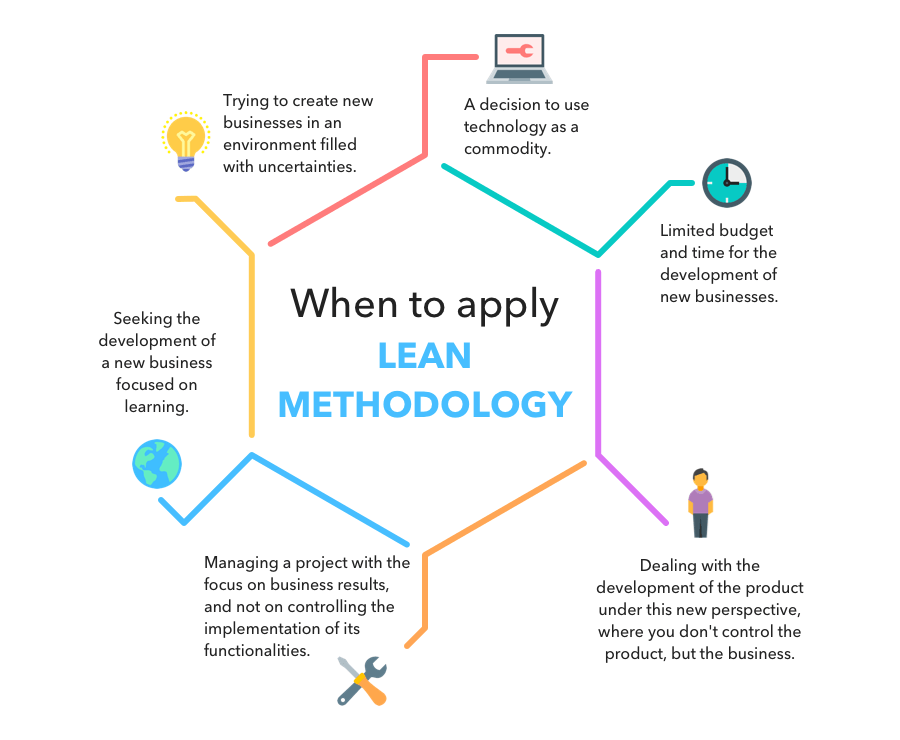
Source: Infinity
The old saying goes you can't supervise what you don't measure, and Lean is all about measuring things. While traditional software development often weighs complexity (and therefore cost) more heavily than value, Lean values simplicity above all else.
Although initially created as a manufacturing method for building cars, it's now most commonly used for app development. So your users can get to their objectives faster, with better functionality and less hassle.
The upside of Lean is that costs are lower and deployment happens more quickly; its downside is that it's not always easy to adapt to everyone's thinking style.
What is Lean Methodology?
Lean principles strive to eliminate waste by constantly focusing on customer needs and adding features that solve customers' problems. All software development efforts should start with a blank slate, and you should make every change as late as possible.
The sooner you know what your customers need, then use that information to plan your development strategy around those features. Over time, your finished product will reflect their desires instead of any internal ideas about what they may want from you in future projects.
To minimize wasted effort and resources before customer input is available, employ lean practices such as Lean Startup. The principles of lean focus on getting rid of wasted motion and action so that companies can get to market quickly while reducing expenses wherever possible.
Benefits of using Lean Methodology
-
It reduces waste and effort from non-essential sections.
-
It focuses on critical features.
-
Better motivation for the team.
-
High adaptability.
-
It provides high value to the end-users.
Drawbacks of using Lean Methodology
-
Lack of time-frames.
-
Sometimes fails to offer a good vision of the project.
4. Extreme Programming (XP)- Offering Excellent Documentation
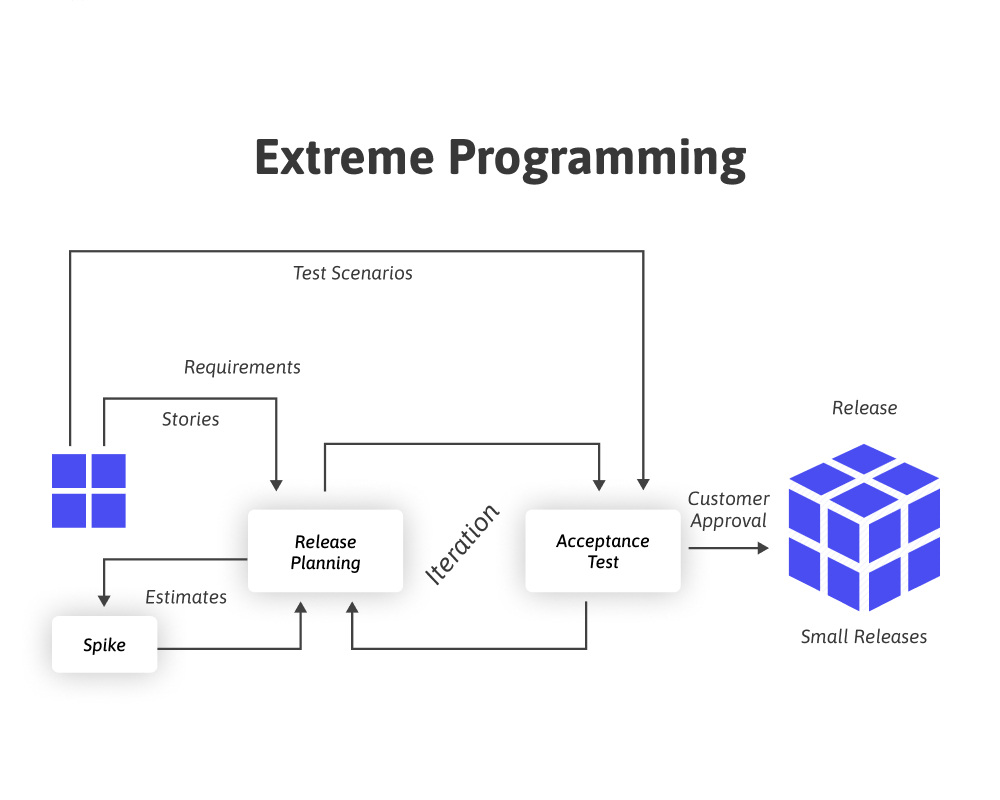
XP aims for elegant solutions that can be developed quickly by an interdisciplinary team and produce functionality early to allow constant customer feedback throughout system development.
The roles in XP are programming-oriented because it treats code as first-class citizens through pair programming and collective ownership.
What is Extreme Programming?
It is a method that values working software over comprehensive documentation. A common tenet of XP is planning to throw away code because a critical goal of XP is to create new functionality quickly rather than existing polish code.
It makes sense in practice: why spend time on something you're planning to rewrite? Although considered an agile methodology (XP predates agile development), you can implement XP with or without many of agile's other principles.
Programmers still write unit tests and refactor as needed—but some elements, like pair programming and test-driven development, may be skipped if programmers decide it isn't valuable for their project.
Benefits of using eXtreme Programming
-
Fast-paced work environment.
-
Limits failures & bugs.
-
Trims cost of change.
-
It enhances employee commitment.
-
It ensures continuous integration & deployment.
Drawbacks of using eXtreme Programming
-
It lowers focus on design.
-
High stress.
5. Crystal Methodology- Offering Personalized Experiences
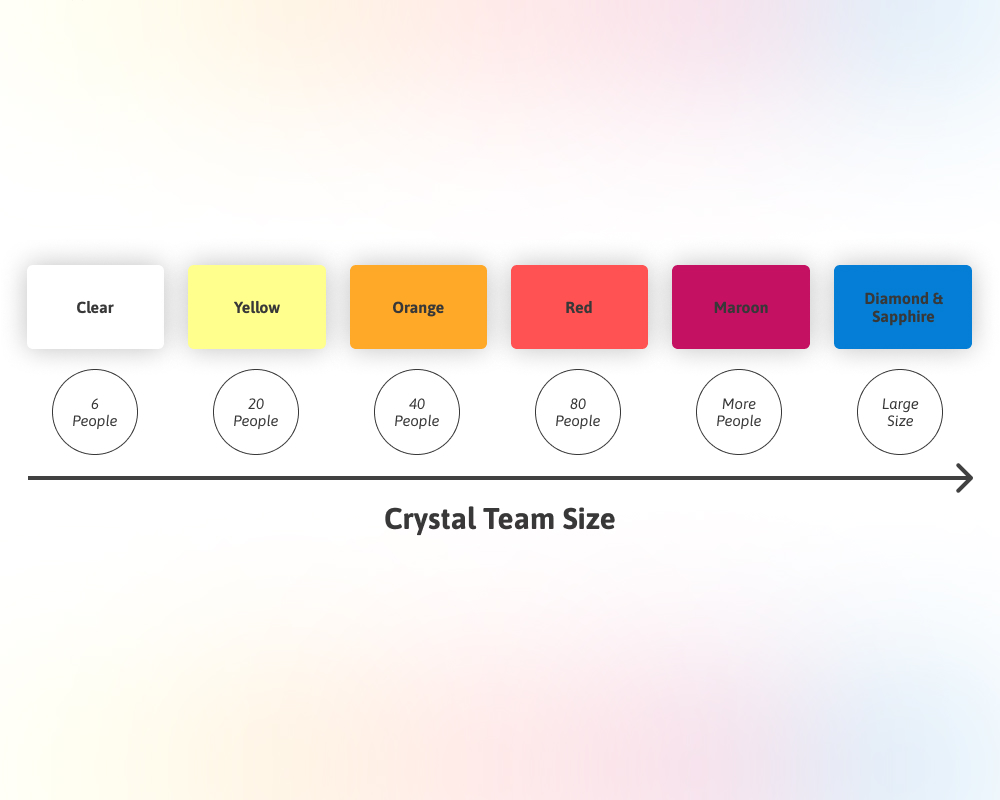
In a world of increasing change, software needs to adapt quickly. Businesses rely on software solutions to help increase efficiency and offer customers more personalized experiences. The rush is to provide those solutions, which means teams need methods for creating them at high velocity.
There's no dearth of opinions about how to do it, but one agile methodology has emerged as a clear leader among IT professionals and development managers: Crystal.
When used correctly, Crystal creates an environment where developers collaborate with users, QA testers, and others from all parts of an organization—offering transparency and promoting rapid progress.
Designed around collaboration through tools like Slack or JIRA, teams can get faster feedback from stakeholders and correct courses when necessary with less work on documentation since everything is built into these systems.
What is Crystal Methodology?
One of several industry leaders, Crystal takes an object-oriented approach that prioritizes simplicity and cost-efficiency. The methodology was created by Ward Cunningham, who developed it to speed up development with even less waste than Scrum.
As an agile framework for application development, Crystal uses its objects to describe any set of actions and data encapsulated as independent from other objects. One of its core tenets is favoring processes over tools, making it accessible, easier to learn, and a preferred choice for handling projects via software development outsourcing.
Benefits of using Crystal Methodology
-
Effective Delivery
-
Timely Reviewing
-
Osmotic communication
-
Safe Space
-
Focus on work
Drawbacks of using Crystal Methodology
-
Poor documentation
-
It lacks well-defined plans.
Final Words
Things change; they always have. So what are we doing differently? Scrum is king, everyone loves Lean, and Kanban is an acceptable alternative to Scrum.
In 2022 these five agile software development methodologies will be applied by thousands of companies around the world. So, what do you think is going to happen? What methods will change and why?
Post your thoughts as a comment, and I would love to add them to my conclusion!

Comments (0)